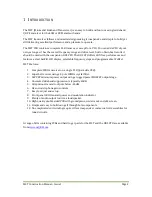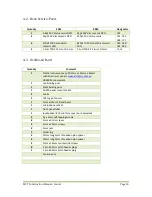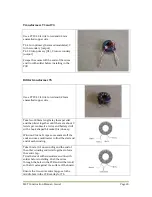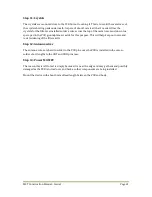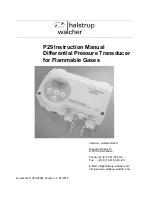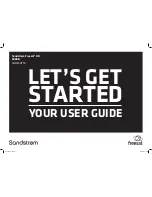
MST Construction Manual – Issue 1
Page 6
3
C
IRCUIT
D
ESCRIPTION
3.1
SSB
GENERATOR
Transistor Q1 is configured as a Colpitts oscillator and acts as the 10MHz carrier oscillator in
transmit and beat frequency oscillator (BFO) in receive. The frequency of crystal X1 is set by
trimmer capacitor TC1 to a frequency slightly above the upper crystal frequency response. This
results in LSB being generated. Capacitor C1 is included in the PCB pattern but not used in this
application. The power supply to the oscillator is regulated with a 9.1V Zener diode ZD1.
The oscillator feeds buffer stage Q2 to provide a low impedance drive for the balanced
modulator. A lower level output of around 500mV pk-pk is obtained at the junction of Q1
emitter resistors to feed the receive product detector.
Transistors Q3 and Q4 are configured as a shunt feedback audio amplifier which has stable gain
and low output impedance. The low input impedance makes it ideally suited for low impedance
microphones. C16 is included to prevent RF feeding into the amplifier while C19 provides high
frequency roll off.
The balanced modulator is a diode switching type and doubly balanced. When the carrier signal
is positive diodes D1 and D4 conduct and when it is negative diodes D2 and D3 conduct. The
result is that no RF is present at the output transformer T1. If an audio signal is injected into the
bridge the balance is upset and a double sideband suppressed carrier signal is produced at the
output of T1. Note that capacitor C8 holds the junction of D1 and D2 at ground for RF.
Due to variations in component parameters the balance is not exact and so trimcap TC2 and
trimpot VR1 are adjusted to bring the modulator into balance. In practice up to 50dB of carrier
suppression can be achieved.
Diode D5 is used as an RF switch. With no DC current flowing the diode is a high impedance to
RF. In transmit around 6mA of DC current flows through D5 and it becomes a low impedance
path for RF. This feeds the output of the balanced modulator into the crystal filter. In receive D6
performs a similar function.
The crystal filter is a 10MHz 4 pole ladder type using closely matched crystals on the same
frequency. Capacitors C11 to C15 are selected to provide a usable 2.5KHz bandwidth. Resistors
R9 and R10 terminate the crystal filter in the correct resistance to give low ripple in the pass
band.
3.2
T
RANSMIT MIXER
The transmit mixer is based around U5 a SA612 balanced mixer. The 10MHz LSB signal from the
crystal filter is fed single ended into pin1 while the other input on pin 2 is grounded to RF by
C65. The VFO signal of around 300mV pk-pk is fed into pin 6. The balanced output of the mixer
is fed to transformer T7 which is tuned to the difference of the VFO and carrier frequencies. The
transformer used here is actually a 10.7MHz IF transformer with an integral 47pF capacitor. An
external capacitor is added to lower the resonate frequency to match the transmit frequency.
Summary of Contents for MST400
Page 1: ...MST Construction Manual Issue 1 Page 1 MST CONSTRUCTION MANUAL ...
Page 9: ...MST Construction Manual Issue 1 Page 9 Figure 2 SSB generator ...
Page 10: ...MST Construction Manual Issue 1 Page 10 Figure 3 Transmit mixer ...
Page 11: ...MST Construction Manual Issue 1 Page 11 Figure 4 Power amplifier ...
Page 12: ...MST Construction Manual Issue 1 Page 12 Figure 5 Receive mixer ...
Page 13: ...MST Construction Manual Issue 1 Page 13 Figure 6 Receive audio ...
Page 22: ...MST Construction Manual Issue 1 Page 22 Figure 7 Component overlay ...
Page 25: ...MST Construction Manual Issue 1 Page 25 Figure 8 Front panel drilling guide ...




